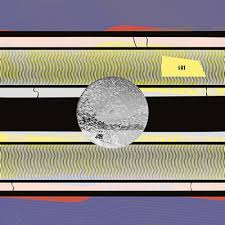Superimpositions, the latest album by Lorenzo Senni on Boomkat Editions, is even better than its formidable predecessor, 2012’s Quantum Jelly, released on Editions Mego. Both records catalogue Senni’s engagement with producing with what he vividly calls "pointillist trance". The product is essentially 90s-style trance permanently withheld from its own beat drop. It’s completely without drums, melodically aggro and viscerally consuming.
In choosing "pointillist trance" as the term to describe his praxis, Senni evokes—intentionally or not—the sociologist Zygmunt Bauman’s concept of "pointillist time", a characterisation of the particular function of temporality today:
"As lived by its members, time in the liquid modern society of consumers is neither cyclical nor linear, as it used to be for the members of other known societies. It is instead, to use Michel Maffesoli’s metaphor, pointillist […] marked as much (if not more) by the profusion of ruptures and discontinuities, by intervals separating successive spots and breaking the links between them, than by the specific content and the spots. Pointillist time is more prominent for its inconsistency and lack of cohesion than for its elements of continuity and consistency […] Pointillist time is broken up, or even pulverized, into a multitude of ‘eternal instants’ – events, incidents, accidents, adventures, episodes – self-enclosed monads, separate morsels, each morsel reduced to a point ever more closely approximated to its geometric ideal of non-dimensionality."*
One of the reasons trance music is so captivating is because it opens up immediate slippage into "eternal instants": moments of serotonin-lurching melancholy, uproarious, pure emotion and scintillating homogeneity of feeling. There is no room for a dialectic in a trance song: the only options are "0" and "1" and it is always the latter. No uneven surfaces, no loose ends. One gliding, perfectly interlocking chord progression or deliciously splintering arpeggiation, and one thoughtlessly memorable vocal: it not total luxury that these eternal instants are stretched out to a span of several minutes?
Senni manufactures music that makes these eternal instants even more eternal by withholding the beat drop that we expect from them, the thing that makes them move, as I’ve above noted. He holds the listener permanently in transit, in between the bridge and the chorus, in an undefined non-space, on neither side of a segmentation. In between punctuations, starts and stops.
Listening to Superimpositions, with its carefully truncated version of its source inspiration, one is made to ask: what social space does this music soundtrack? Who does what there? We could venture to guess that it’s a rave, yet there’s no beat grounding anyone, giving them something to dance upon. This brings to mind Hito Steyerl’s discussion of groundlessness in contemporary society. She writes:
"Many contemporary philosophers have pointed out that the present moment is distinguished by a prevailing condition of groundlessness. We cannot assume any stable ground on which to base metaphysical claims or foundational political myths. At best, we are faced with temporary, contingent, and partial attempts at grounding."
Thus, Senni’s erasure of trance’s beat seems to express a certain character of the free fall that comes with a lack of metaphysical grounding. Further matching Steyerl’s analysis, he offers temporary, contingent and partial remedies with his eternal instants. Each of the tracks on Superimpositions offers simulated emotional consumption by a truth, a way of being in the world that is wholly captivating for the music’s duration. Yet with the next song, there is another experience of truth. Eternal instant succeeds eternal instant. Indeed, this structure very literally reflects the album’s title: a superimposition is the placement of an image or video on top of an already existing one.
There’s something kind of evil in the notion of a superimposition, then. Whereas with palimpsests one can see the traces of previous writers’ markings as they’re effaced and written over, with a superimposition there’s no trace, no hint of what was before. Whereas trance usually fails to satisfy because it’s too cheesy or completely devoid of content, the reason Senni’s work is so gut-fillingly satisfying, is because it finally matches the melancholic and cathartically euphoric potential of trance’s formal elements with content that deserves such extreme sensory expression.
*Taken from: Bauman, Zygmunt. Consuming Life. Cambridge: Polity, 2007. p.32
<div class="fb-comments" data-href="http://thequietus.com/articles/16189-lorenzo-senni-superimpositions-review” data-width="550">


